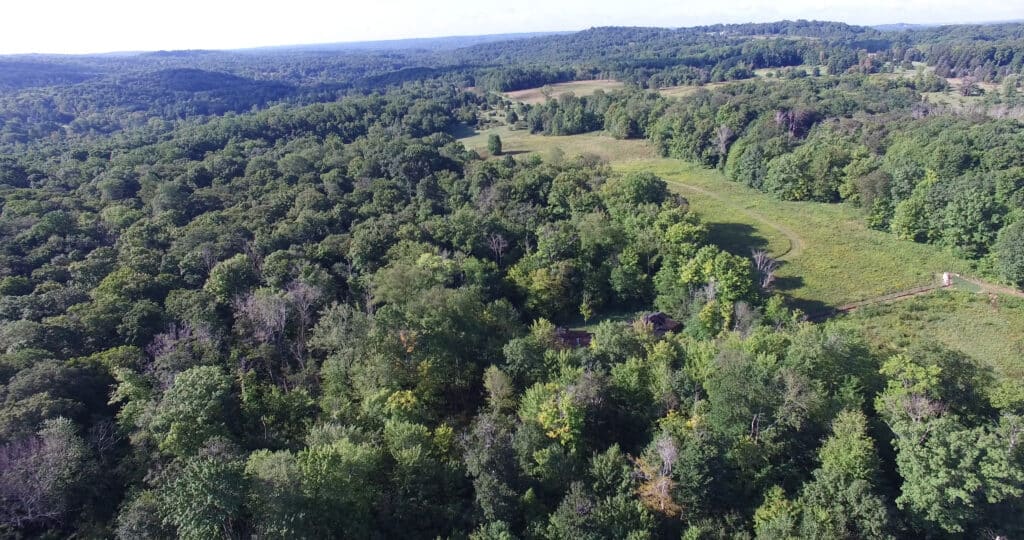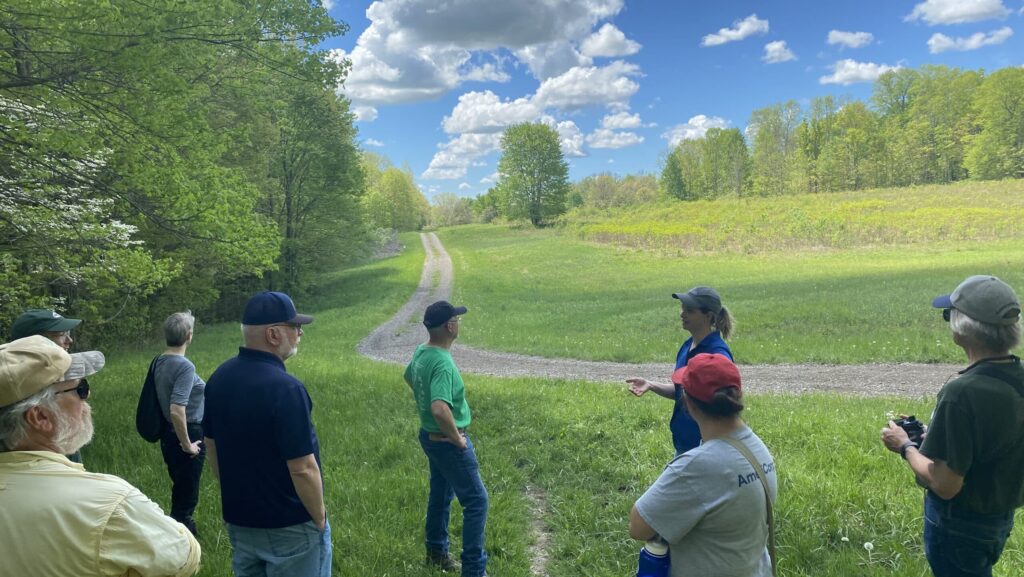Private landowners face a variety of challenges when it comes to successful land stewardship including succession planning, pests, disease, poor logging practices, pressure from logging companies, and invasive plants.
Working Woods at the Holden Arboretum addresses these challenges.

The Working Woods Learning Forest is a 67-acre, nationally recognized, publicly accessible demonstration site at the Holden Arboretum. This forest integrates research and outreach to increase understanding of and promote best practices in forest management.
Working Woods seeks to empower people to manage, protect, and create resilient forests in Ohio.
Single Tree Selection Timber Harvest
A sustainable timber harvest emphasizes stand diversity and forest health while demonstrating potential economic benefit and sustainable resource investment for a landowner.
Premature or poorly done harvests often undercompensate the landowner and can lead to degraded forests.
12.5 acres of mature Beech-Maple second growth forest was harvested for timber in September 2019.
Demonstrating a good timber harvest and outcomes shows how a forest can produce economic benefit for landowners while remaining healthy and productive.
Timber Stand Improvement – Invasive Removal
The removal of nonnative woody species is a common forest management technique used to increase productivity, improve tree regeneration, the understory plant community, and wildlife habitat.
Target species included buckthorn (Rhamnus cathartica), honeysuckle (Lonicera spp.), multiflora rose (Rosa multiflora), Japanese barberry (Berberis thunbergii) and other nonnative shrubs and trees. Landowners who wish to treat invasives on their property can use the expertise found at Working Woods as reference.
Timber Stand Improvement – Improvement Cuts
Improvement Cuts are an example of a Timber Stand Improvement. Thinning makes more space/resources for the healthiest trees, letting them grow faster and healthier.
Unlike the Timber Harvest, no trees are extracted for an improvement cut: trees are felled or girdled, so that they contribute to the organic matter of the forest floor or provide habitat for wildlife.
Agroforestry and Non-Timber Forest Products
Agroforestry is a system of cultivation which integrates existing ecological conditions with production goals for human use. While timber management treatments exist at the center of the site, the edges of Working Woods present an opportunity to use agroforestry to demonstrate non-timber forest product (NTFP) cultivation.
The ecosystems of Working Woods provide opportunities for demonstrating everything from mushroom growing on logs, to maple syrup, to medicinal plant cultivation.
These agriculture-forestry integrations are growing in popularity amongst hobbyists and homesteaders and present an inspiring and engaging experience that contrasts conventional agriculture. Agroforestry practices also provide viable alternatives to tree harvesting for income to landowners. Agroforestry in Working Woods will be phased, growing as the Working Woods project grows and changes.
Ecological Restoration and Habitat Improvement
Intervention through restoration seeks to boost an ecosystem towards a further successional state so that a young forest can be off to a healthy start and become a more healthy, resilient, biodiverse system quicker than if no intervention occurred.
Working Woods research explores how management can help woodland properties evolve from young, forested land into older, healthy forests and investigates the impact climate change will have on our forests.
Whether you are a forest landowner, a forestry or natural resource professional, or just want to learn more about working woodlands, we’d love for you to visit the Woods! If you would like to set up a free tour of the site, please reach out to our Woodland Community Forester at [email protected].
Working Woods is open to the public: Any ticketed visitor to the Holden Arboretum can access Working Woods on foot (a little less than a mile from the Visitor Center). Parking at the Working Woods parking lot is available for Members only.
Otherwise, the best way to see Working Woods is to come to the annual Field Day in the spring, or to a workshop or other program. Click here to get on our mailing list to be informed about upcoming opportunities.
REGISTRATION OPEN! The 2024 Working Woods Field Day will be on June 1st! As always, it’s free to attend and all are welcome. Register to attend HERE.

Contact our team at [email protected]
Popular searches:
Time: 1714262400 / Saved: 1714262400
Views (7 day(s) ago): 31
Views (6 day(s) ago): 33
Views (5 day(s) ago): 17
Views (4 day(s) ago): 12
Views (3 day(s) ago): 18
Views (2 day(s) ago): 17
Views (1 day(s) ago): 15
Views (Today): 12